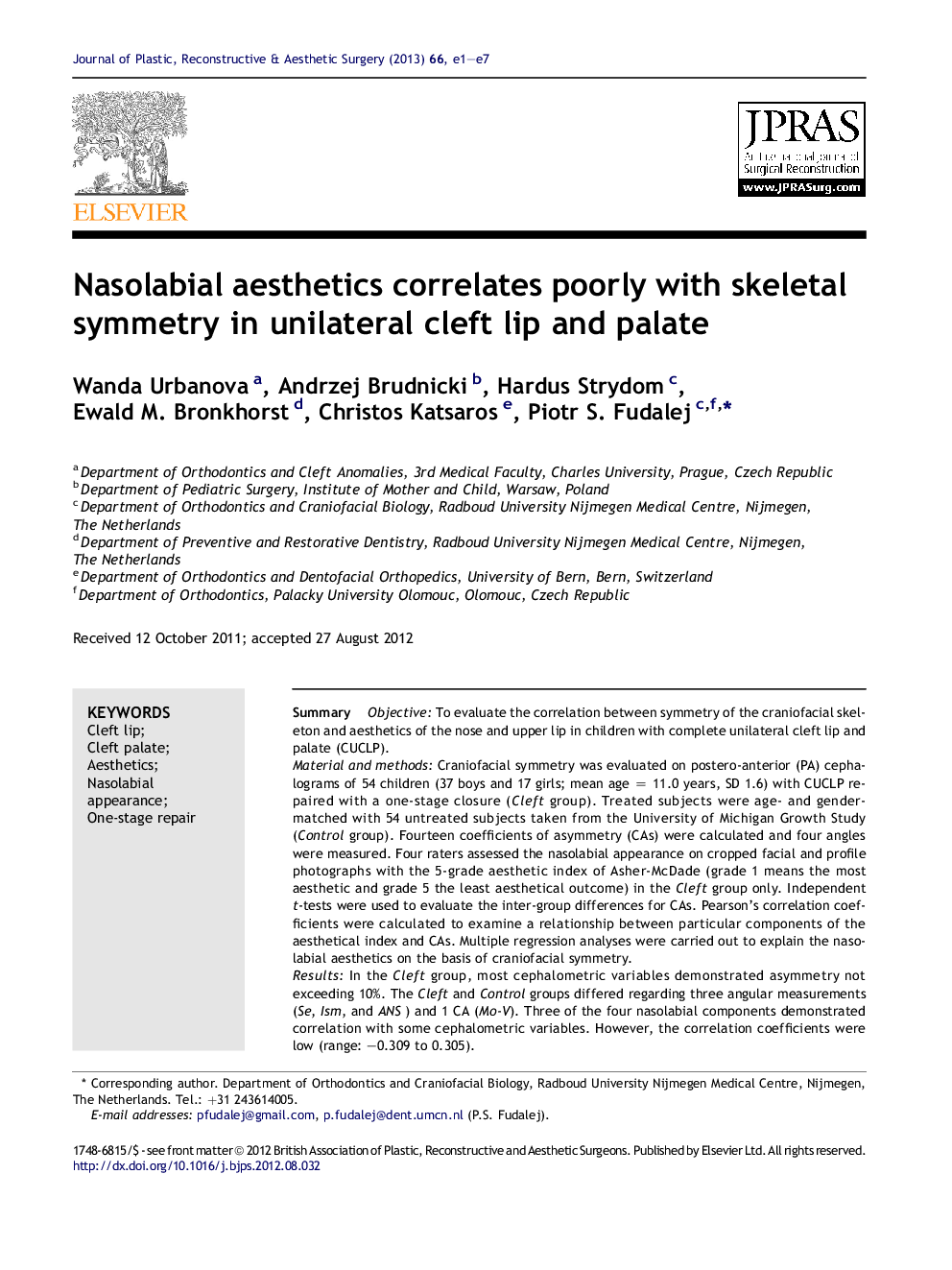| Article ID | Journal | Published Year | Pages | File Type |
|---|---|---|---|---|
| 4118852 | Journal of Plastic, Reconstructive & Aesthetic Surgery | 2013 | 7 Pages |
SummaryObjectiveTo evaluate the correlation between symmetry of the craniofacial skeleton and aesthetics of the nose and upper lip in children with complete unilateral cleft lip and palate (CUCLP).Material and methodsCraniofacial symmetry was evaluated on postero-anterior (PA) cephalograms of 54 children (37 boys and 17 girls; mean age = 11.0 years, SD 1.6) with CUCLP repaired with a one-stage closure (Cleft group). Treated subjects were age- and gender-matched with 54 untreated subjects taken from the University of Michigan Growth Study (Control group). Fourteen coefficients of asymmetry (CAs) were calculated and four angles were measured. Four raters assessed the nasolabial appearance on cropped facial and profile photographs with the 5-grade aesthetic index of Asher-McDade (grade 1 means the most aesthetic and grade 5 the least aesthetical outcome) in the Cleft group only. Independent t-tests were used to evaluate the inter-group differences for CAs. Pearson's correlation coefficients were calculated to examine a relationship between particular components of the aesthetical index and CAs. Multiple regression analyses were carried out to explain the nasolabial aesthetics on the basis of craniofacial symmetry.ResultsIn the Cleft group, most cephalometric variables demonstrated asymmetry not exceeding 10%. The Cleft and Control groups differed regarding three angular measurements (Se, Ism, and ANS) and 1 CA (Mo-V). Three of the four nasolabial components demonstrated correlation with some cephalometric variables. However, the correlation coefficients were low (range: –0.309 to 0.305).ConclusionsThere is a weak correlation between craniofacial skeletal symmetry and aesthetics of the nose and upper lip in children with CUCLP.
